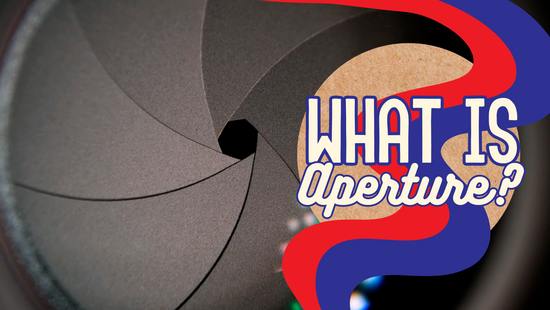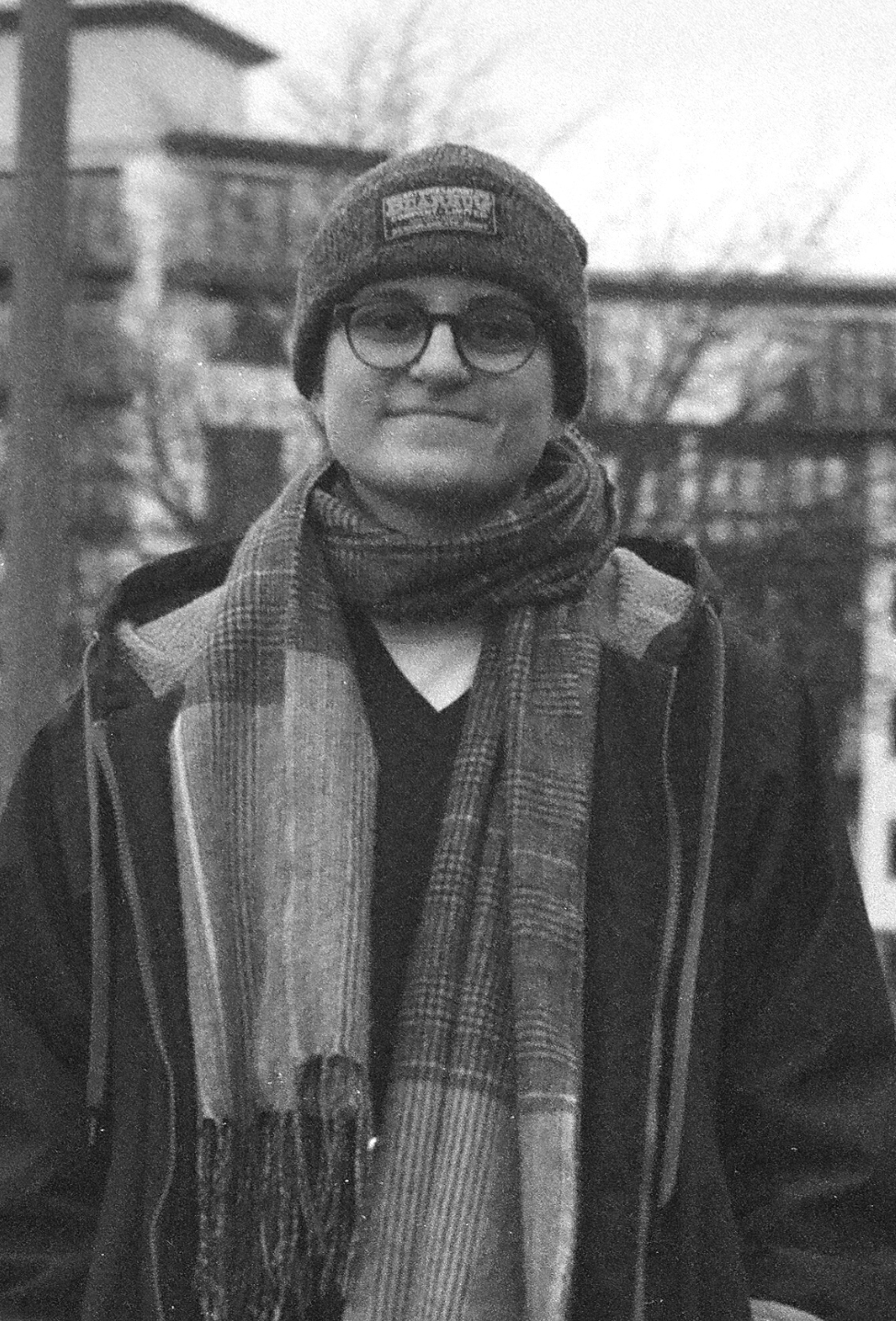Medium format film photography offers a unique and rewarding experience for photographers looking to take their photography to the next level. With larger negatives than 35mm film, medium format cameras capture stunning detail and depth in each shot.
Medium format photography can sound and look really intimidating to a beginner, so we are here to help you. Here is our complete guide with everything you need to know about medium format photography:

Medium Format Photography Glossary
120 - the size of film used in most medium format film cameras
127 - slightly smaller than 120 film and used in a few consumer cameras
Aperture - the opening in the lens that allows light through the lens, the larger the number = the smaller the hole, this also has an impact on depth of field
Bellows - found on folding cameras, they act as a light proof box between the lens and the camera body
Folding camera - a type of 120 camera that has a lens that folds out of the camera body
Focal length - mathematically equals the distance between the front lens element and the film inside the camera when the lens is focused at infinity, also refers to the amount of magnification a lens has, the higher the number = the more magnification
Frame size - medium format cameras can have varying sizes of the image you take on rolls of film, for example, 6cm x 9cm
Manual focus - the user of the camera has to select the focus point themselves, usually by moving part of the lens on your camera
Medium format - generally used to refer to film larger than 35mm and smaller than large format, but is most commonly used for 120 film
MLU - mirror lock up, a switch on some models of camera that allow the mirror to be locked in the up position
Negatives - film that has been developed and can be scanned
Rolleiflex - a brand of camera, their most popular cameras are TLR cameras
Spool - 120 film comes packaged on a spool that is put into your camera
TLR - twin lens reflex, a type of camera with two lenses on the front
TTL - through the lens, refers to the type of light meter the camera has, light is measured after it comes through the lens on these cameras
Viewfinder - what you look through to frame an image
What is medium format photography?
Firstly, medium format most often refers to 120 film. Medium format also exists as a concept for digital photography. Medium format is used to refer to film sizes that are bigger than 35mm but smaller than large format photography, but 120 film remains the most common and popular of the medium format. This type of medium format photography is the focus of our article.
Rolls of medium format 120 film are approximately 61mm wide, which makes them almost twice the size of 35mm rolls of film. This means your physical image is bigger and therefore will retain much more detail and quality.

120 film comes on a spool, which is loaded into one side of your camera. The film is then attached to a second spool on the other side of your camera. When a roll of 120 film is finished, all your film will be wound around the second spool.

Each camera varies the amount of exposures you can get per roll of film. These tend to vary between 10 and 12 shots per roll of medium format 120 film.
120 film is as largely available to consumers as 35mm film is. It comes in black and white, as well as colour.
Where do you get medium format film developed and scanned?
Most developing labs that develop 35mm film will also be able to develop medium format 120 film. This is sometimes slightly more expensive than 35mm film as medium format 120 film usually needs to be developed by hand, which is a more involved and longer process.
High resolution scans are provided as standard with our partnered lab, Gulabi, and we highly recommend getting high resolution scans if you use a different lab. This will allow you to fully appreciate the quality and detail in medium format 120 film. You will quickly realise why many professional and serious photographers choose medium format over 35mm film.

What are the different types of medium format film camera?
Whilst there are just a few different types of 35mm film camera (mainly SLR and point and shoot), there are different styles of medium format film cameras to consider when looking for your first medium format film camera. Each of these types of camera have differing features and styles of photographing.
One of the most iconic medium format cameras is the TLR. These are most associated with medium format photography and are most certainly attractive cameras.
Another common, and relatively cheap, medium format camera is the folding camera. These are truly as antique-looking as they come and provide a cost-effective way to try medium format film photography.
There are also SLR and rangefinder medium format cameras. These are the same as the 35mm film cameras of the same name.
What is a TLR camera?
TLR means “twin lens reflex”, which means the camera’s focusing method uses two lenses. This makes more sense when you realise that SLR means “single lens reflex”.
A TLR camera has one lens for focusing and one lens for image taking. These two lenses are calibrated together, so that the lens for focusing matches up with the lens for image taking. When looking at a TLR camera, the focusing lens is at the top and the image taking lens is at the bottom.
When you are framing an image and focusing using a TLR camera, you are looking through the viewfinder onto a mirror that is reflecting the view seen through the focusing lens. When the image is taken, the shutter opens in the bottom image taking lens to expose your image. The two lenses are so close together that the difference in framing is miniscule.
What is a folding camera?
A folding camera is one of the most simple medium format cameras. It comprises of a lens that is housed at the end of a set of bellows that fold out from the body of the camera. Focus, shutter speed, and aperture is all housed within the lens. The viewfinder of the camera is not linked to the lens in any way, so focusing is achieved by measuring how far away your subject is and setting the lens to the correct distance.
Advancing the film in one of these cameras is also a very simple affair. In order to advance the film the right amount, you need to open a small window on the back of the camera where a number is displayed. Don’t worry, all manufactured medium format films have these numbers in the right place to be able to view them.
What is a SLR camera?
SLR refers to "single-lens reflex". These are the types of the cameras most associated with film photography. This type of camera uses a mirror and prism system so that you can see what you are taking images of through the eye-level viewfinder.
What is a rangefinder camera?
Rangefinder cameras have a small patch in the center of the viewfinder. This patch moves as you change the focus of the lens. The patch shows a reflection of part of the image you are composing. When this patch lines up with your subject, your subject is in focus. Honestly, it is hard to describe, but it makes so much sense when you see it in action.

How big is a roll of 120 film?
Rolls of 120 film are not 120mm. In fact, a roll of 120 film is always 6cm in width. A roll of 35mm film is 35mm in width, so a roll of 120 film is almost twice the size.

How many images do you get on a roll of 120 film?
The amount of images you can take with a roll of 120 film varies depending on the type of camera you have. Whilst 120 film is always 6cm in height, the width of your images depends on the camera you have. The wider your images are, the less images you will get on one roll of film.
The different type of film sizes are as follows:
- 6x4.5cm (rectangle)
- 6x6cm (square)
- 6x7cm (rectangle)
- 6x8cm (rectangle)
- 6x9cm (rectangle)
- Larger than this is considered a panoramic camera.
6x4.5cm framed cameras will be able to take 16 exposures on a roll of 120 film, whereas on a 6x9cm camera, you will be able to take only 8 images. The most common 120 cameras are somewhere between these and often can take between 10 and 12 exposures per roll of film.

What other film can you use in a medium format camera?
Medium format 120 cameras don’t just use 120 film. Some are able to use 220 film. These cameras often feature a sliding piece on the pressure plate of the camera that allows the pressure plate to be slid into a slightly different position. This allows you to use 220 film and get slightly more exposures per roll of film.
Medium format 120 cameras can also be used with 35mm film. This is possible with the use of an adapter for the camera. When using 35mm film in a medium format 120 camera, the image spreads across the entire roll of film, including the sprockets where the brand of film is displayed. This makes for really cool, panoramic effect images.
Below are two examples of this:


Which medium format camera should I buy?
Part of our ethos at Cameras By Max is to buy the camera that you like the look of the most. You can learn to use any camera with a little bit of time and patience. My advice is to stick to your budget and buy a camera that you are interested in learning more about.
If you have specific requirements for a camera, such as being small for travelling or having a certain aperture for portraits, then we recommend reading some more of our blogs where we break down the best cameras for different situations.
We also recommend taking a look at our range of cameras and learning more about the ones that interest you.
If you like what we do, but can't buy a camera from us, please consider buying us a cup of coffee! It helps us to keep these resources free, consistent, and accessible.




